Queues
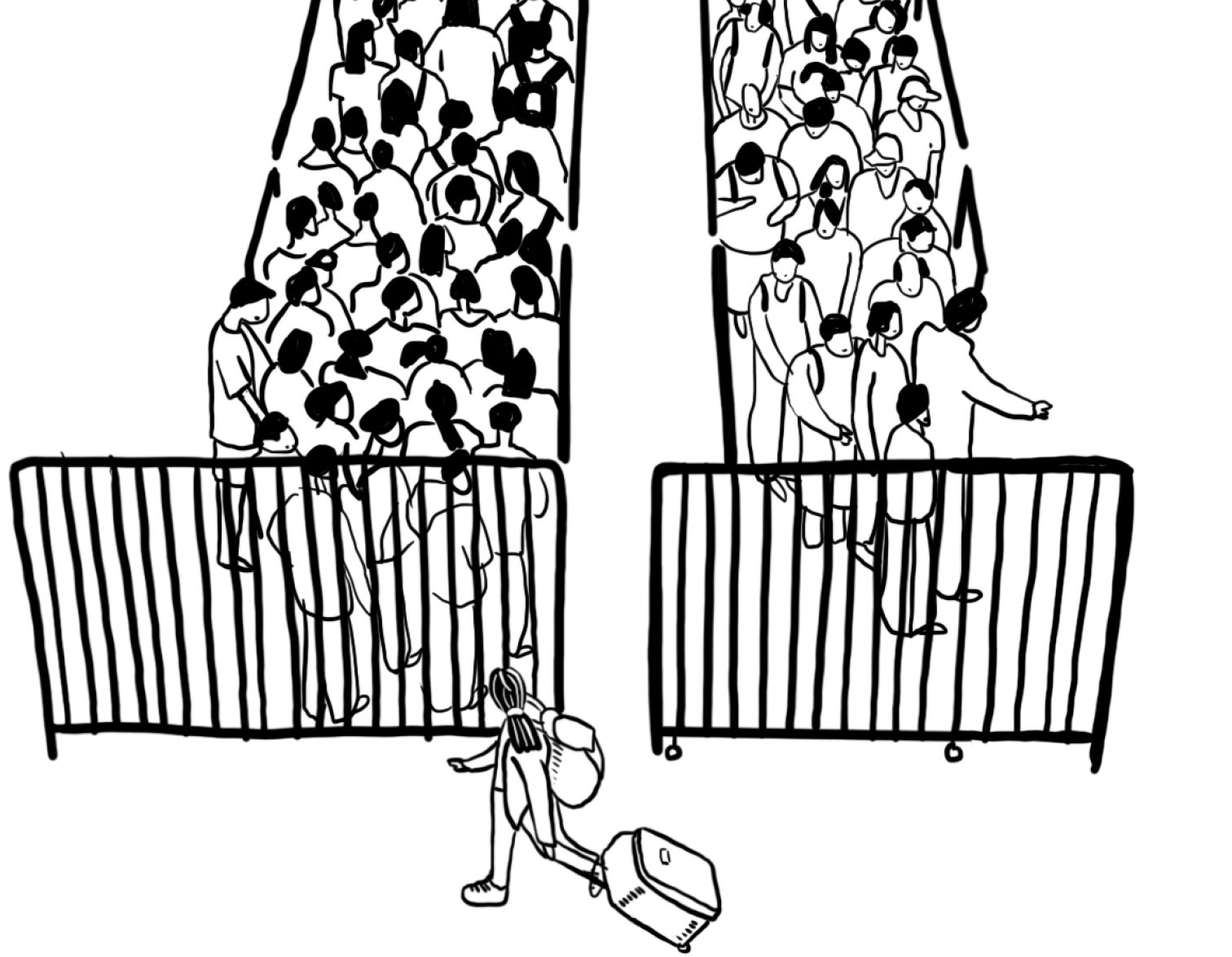
Airports have learned to optimize queues at the airport, drawing from adjacent industries and human psychology.
︎︎︎ Related entries:
Time
Space
Illusion of Control
︎ Random Entry
Tags: systems design, directionality,
spatial configuration, psychology,
waiting time
Time
Space
Illusion of Control
︎ Random Entry
Tags: systems design, directionality,
spatial configuration, psychology,
waiting time
Design Decisions
Waiting in lines at the airport to be processed - at check in, luggage drop off, security check, boarding, and customs - correspond with time periods where passengers experience the most elevated levels of stress, anxiety, boredom, and other negative emotions [1]. Airports and airlines employ a combination of methods to process large numbers of people. To do so, air travel operations draw extensively from queueing theory, a branch of mathematics studying the waiting of lines.
Aside from the air travel context, queueing theory is used to design the operations and spaces of retail, factories, offices, hospitals, and supermarkets, from efficiently processing DMV applicants, to sorting incoming patients to the emergency room in terms of order and urgency. Its relevance also extends to telecommunications, traffic engineering, computing, and much more.
Because of this, airports have been able to learn from these adjacent industries as they experiment with various types of in-person queuing. The three most common types of queues are as follows:
- Single I-shaped line of customers, for one counter
- Multiple I-shaped line of customers, for multiple counters
- Single S-shaped line of customers, for multiple counters
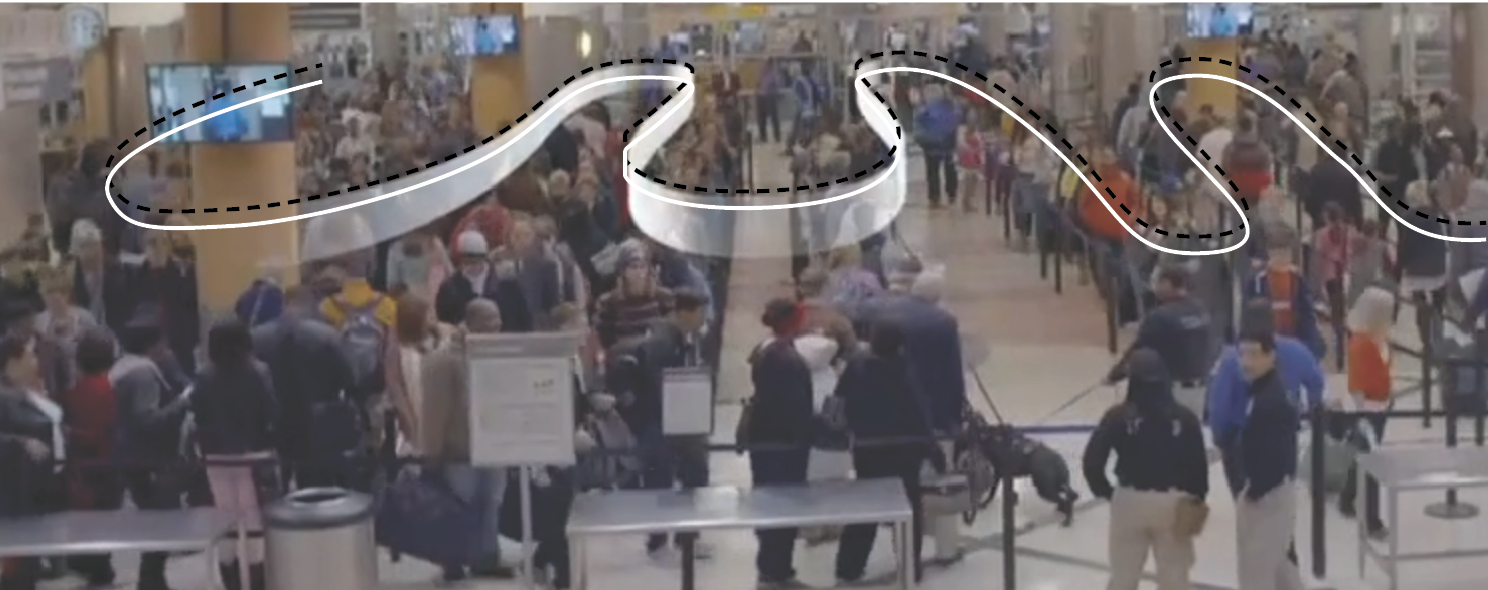
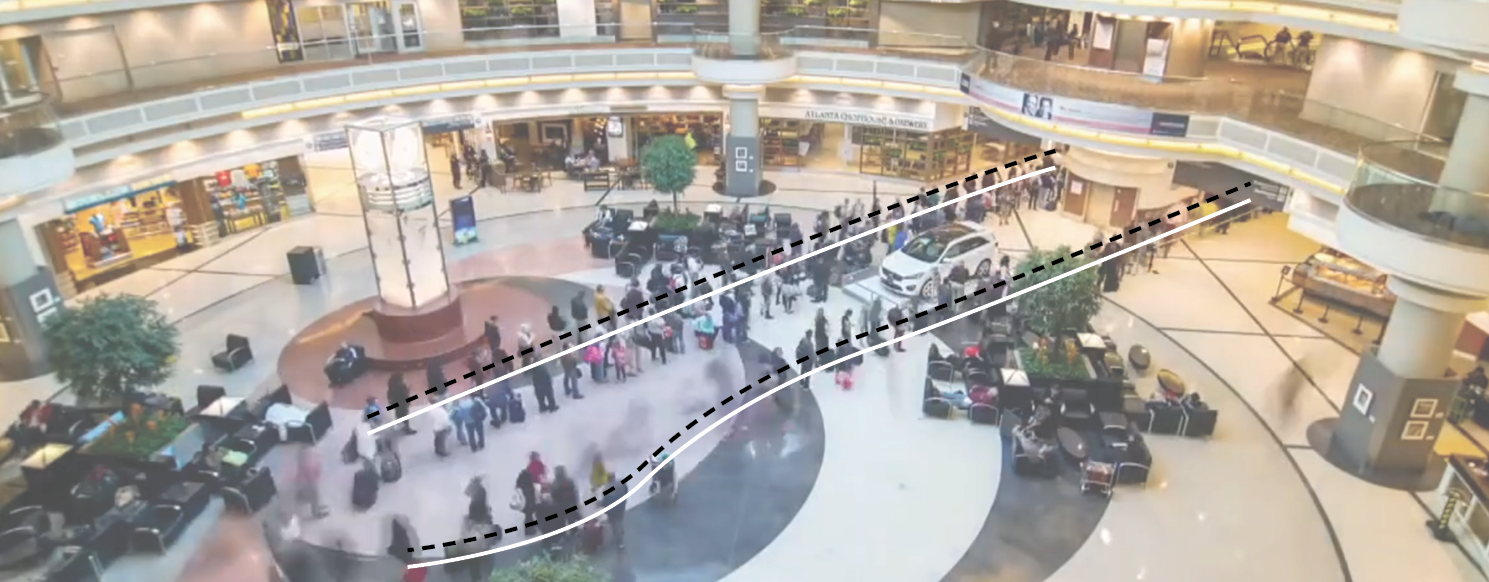
Figures 1 and 2. S-shaped queue (above) and I-shaped queue (below)
The first type of queueing is the most simple and intuitive, but it is not used often at the airport due to the large numbers of people to be served. The second type, the multiple I-shaped line, is the more traditional type of queue line and is ubiquitous in many contexts.
However, the most popular type of queues today is the third type, the S-shaped line, where a single line is arranged in a compact S-shaped form, from which passengers can be served at multiple counters as they become available [2]. It is more time efficient and space efficient than the multiple I-shaped lines, through its better grasp of human psychology.
Effects on Passengers
Why might this be the case? Multiple I-shaped lines are less efficient than a single S-shaped line, because the former motivates customers to follow one of four behaviors:
- Staying: customers stay in the queue until they are served
- Switching: customers switch between queues if they think other queues are shorter
- Dropping Out: customers leave the queue if they have waited too long, and seek alternatives
An important reason for the inefficiency of multiple I-shaped lines has to do with what economists call the “last place aversion”[3]. Standing at the last place in a line leads people to feel significantly less satisfied than if someone is standing behind them. Those in a particular place in a queue were 4 times more likely to drop out when there was no one else behind them, and twice as likely to switch to another queue, even though by doing so they typically waited even longer to get served [3]. In other words, people often switch between queues if they think another is shorter, but they are bad at assessing whether a line is truly shorter, and the excessive “switching” or “dropping out” slows down service for everyone.
To dissuade people from this consumer queuing behavior, airports as well as retail stores have increasingly adopted the S-shape type of queues. S-shaped lines also make it more difficult for people to estimate the true length of a line. In addition, S-shaped lines are perceived as most fair; as there is only one line, it is strictly first come, first served, and no one arriving later than another is served before them.
“When we join a queue, we tend to make the most rational choice we can, which usually means joining the shortest queue. But if we see a line moving faster, we might switch without having enough extra information, and we can often get it wrong” [3].
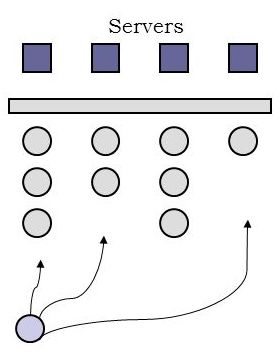
Multiple I-shaped queue
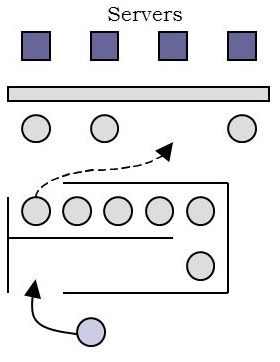
Single S-shaped queue
- Scholvink, J. (2000). “The travel stress curve”. Amsterdam: Market Square Consulting.
- Prisco, Jacopo. 2019. “Waiting Game: An Extended Look at How We Queue.” CNN Style. February 15, 2019.
-
Sample, Ian. 2017. “Back to Front: Why Switching Queues Will Get You Nowhere Faster.” The Guardian, December 27, 2017, sec. Science.